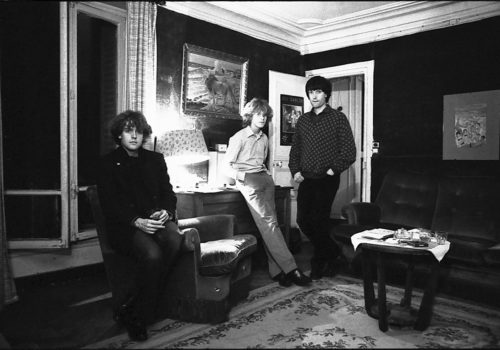He was behind the images of about sixty feature fiction films, worked with directors Maurice Pialat, Philippe Le Guay, Isabel Coixet, and Pedro Almodovar. Jean-Claude Larrieu’s long, beautiful career started in the Pyrenean village where he grew up. At fifteen, he decided to become a filmmaker, without relational support, without training monopolized by the Parisian IDHEC and rue de Vaugirard schools. The dream of touching a camera came true in 1964 through the Establishment cinématographique des Armées (Army Cinematic Establishment), through a voluntary three-year commitment. Once free, Jean-Laude Larrieu worked as a cameraman on news stories and documentaries, which led him through France, Asia, North America, and Latin America. His career as a director of photography started in 1980 with Le Crime d’amour directed by Guy Gilles, and continues today with Isabel Coixet’s The Bookshop and Philippe Le Guay’s Normandie Nue, which will come out in theaters in the fall of 2017.
Along this journey, photography only appeared in 1973, with the purchase of one his first Nikon cameras in Hong Kong. Forgetting the studio lights, Larrieu became his own author. He photographed those close to him, integrating them into the history that he shared with them. The 350 black and white photographs taken during the first days of 1975 in his native village four years later would be the material for the film, Montastruc, produced by INA.
The photographs presented by the Galerie Patrick Gutknecht run over ten years in this place of meetings, of a phalanstery of friends who made their lives in this little apartment building, now destroyed, in the Goutte d’Or’s popular neighborhood in which Jean-Claude Larrieu was so invested starting from February 1968.
“The seventies and eighties were delightfully light,” explains Christian Caujolle, former director of photography at the newspaper Libération . “It was during the most carefree of times that each person was able to assert their right to pleasure, claim their identity, and live through one’s body as a proof of liberty. This was before what we call the AIDS years. At that time, Jean-Claude Larrieu was travelling a lot for countless films and was systematically taking along his coffee maker and other indispensable objects to survive in a worlds where the “petit noir” was not yet universally widespread. He also took along his camera and would return after having immortalized, in black and white, unmade beds in his hotel rooms and some characters whom he had judged to be sufficiently remarkable. But he always returned to the home port of the Goutte d’Or. And there, he continued to photograph, calmly, without the obligation of a “project”, to the rhythm of small daily events. This was before the compulsive practice of the digital. In this building, where each person had his or her own place but where everybody was friends and shared with one another, Jean-Claude Larrieu made himself the chronicler of this life, more bohemian by nature than by decision. We met, during meals on the roof as well as during escapades in Provence or cozy moments near the chimney, writers and artists who would become famous, the anonymous destined to remain anonymous, loyal and eternal friends, handsome boys either passing by or staying a while, those at meals that became parties every time. The daily life of the group woven together in kinship, relaxed and, at the same time, built around the photographer and his closest friends.”
Certain members of this home would know fame: writer and photographer Hervé Guibert, designer Christian Louboutin, photographer Bernard Faucon, artists Claude Lévêque and Pierre Reimer.
Thirty years later, Jean-Claude Larrieu’s photos summon the warm atmosphere of rooms filled with books and people sleeping, the happy echo of meetings, dinners on the roofs and courtyard windows, costumes and Epiphany cakes, tours of Provence and the trip to New York, with this nostalgic touch, without which it wouldn’t be the golden age.
Hervé Le Goff
Hervé Le Goff is a journalist, art critic, and French essayist specialized in photography. He lives and works in Paris.
Jean-Claude Larrieu, Les années Goutte d’Or 1977-1987
From March 4 through April 29, 2017
Galerie Patrick Gutknecht
78 rue de Turenne
75003 Paris
France
www.gutknecht-gallery.com
















